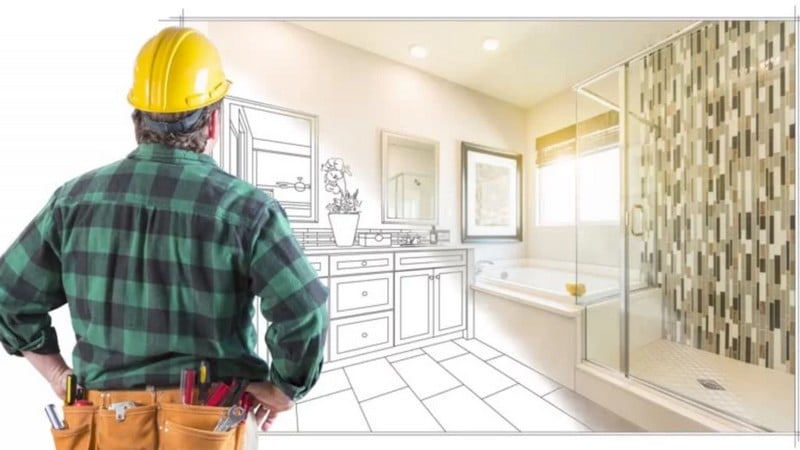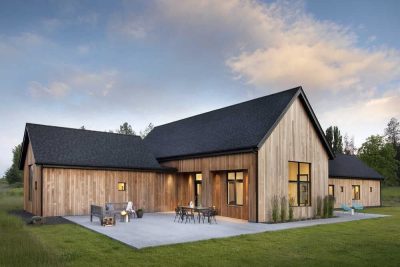
Bathroom remodels are exciting projects that can completely transform a home, but they are also known for unexpected expenses that can disrupt even the most careful plans. According to recent data, the average bathroom remodel cost in the United States in 2025 ranges from $6,639 to $17,621, with most homeowners spending around $12,121.
Labor typically accounts for 40% to 65% of the total cost, making it one of the biggest factors in a project’s final price. Even if you plan every penny, hidden costs can sneak in once the work starts — from plumbing surprises to unexpected permit fees. In this blog, we outline the most common hidden costs in bathroom renovations and offer practical budgeting tips to help homeowners stay on track.
Average Bathroom Renovation Cost Breakdown
Bathroom remodel costs depend on both the size of the room and how extensive the updates are. In general, national estimates show that:
- A small bathroom of about 25 square feet generally costs between $1,800 and $6,300.
- A 50-square-foot bathroom typically ranges from $3,500 to $12,500.
- A medium bathroom around 75 square feet usually costs between $5,300 and $18,800.
- A large bathroom of about 100 square feet often runs from $7,000 to $25,000 or more.
A minor bathroom remodel focuses on cosmetic updates such as new fixtures, paint, or lighting, and usually costs between $3,000 and $10,000. A partial renovation includes more significant upgrades, like replacing the vanity, shower, or flooring, and typically costs $10,000 to $25,000. A complete bathroom renovation involves layout changes, new plumbing, and higher-end materials, with costs ranging from $25,000 to $80,000. Homeowners planning any type of upgrade can benefit from a detailed guide to bathroom remodeling to understand each stage and make informed decisions about where to spend and where to save.
1. Mold, Mildew & Water Damage
During demolition, it is common to uncover moisture damage that was hidden behind walls, under tiles, or beneath flooring. Leaking pipes, poor ventilation, and old grout can all lead to mold and mildew growth over time. Repairing water damage usually costs between $3 and $7.50 per square foot, with the average project totaling about $3,842. To avoid unexpected financial strain, homeowners should include at least 10% of their bathroom remodel budget as a contingency for potential mold and water damage remediation.
2. Plumbing Relocation
Relocating plumbing fixtures is one of the most expensive changes in a bathroom remodel. Moving a toilet, bathtub, or sink can add between $500 and $1,000 per fixture because it requires new drain lines, water supply adjustments, and extra labor. A full plumbing rough-in can cost anywhere from $3,000 to $20,000, with an average of about $6,500. To keep a bathroom renovation affordable, it is best to maintain the existing layout whenever possible and only move fixtures when absolutely necessary.
3. Electrical & Lighting Upgrades
Electrical and lighting upgrades often become a larger expense than homeowners expect. Electricians typically charge $50 to $130 per hour and may add a $100 to $200 service-call fee for the first hour. Installing a new outlet alone can cost $200 to $300, depending on the wiring and placement.
You’d also have to account for the cost of installing light switches, transfer switches, breaker boxes, rewiring, and even inspections. These expenses add up quickly when a remodel includes new circuits for statement fixtures, task lighting, or heated flooring. These features reflect top bathroom remodeling trends found in modern baths that focus on efficient use of light, energy savings, and comfort.
4. Permits and Inspections
Building permit and inspection fees are another cost that many homeowners forget to include in a bathroom renovation budget. The average cost of building permits across the United States is about $1,647, but local fees can differ based on the type of work being done. Plumbing or electrical updates often require their own permits and follow-up inspections to verify safety and compliance.
Failing to complete these requirements can lead to fines or slow down the progress of the project. Homeowners should review their city’s building requirements early in the bathroom remodeling process to account for both the cost and time needed for approvals.
5. Ventilation & Exhaust Fan Installation
Proper ventilation is essential in any bathroom remodel, yet it is often underestimated when planning costs. Installing a bathroom exhaust fan typically costs between $115 and $900, with most homeowners paying around $396. The price depends on the fan’s size, noise level, and whether new ductwork is required.
Ignoring ventilation to save money can lead to moisture buildup, mold growth, and peeling paint over time. Investing in a quality exhaust fan helps prevent these problems and protects the materials and finishes used in the renovation.
6. Demolition & Disposal
Tearing out an old bathroom can be as involved as building a new one. Breaking up tile, removing drywall, and hauling away heavy materials like cast-iron tubs or vanities all take time and specialized labor. Disposal costs also add up since most contractors charge for loading, transport, and landfill or recycling fees.
The total for demolition and debris removal typically reaches anywhere from $300 to $3,500, depending on local rates and the amount of material involved. Most homeowners expect to spend around $800 on average for a bathroom demolition. Accounting for these charges early ensures the renovation budget reflects the full cost of starting with a clean, safe workspace.
7. Asbestos or Lead Abatement
Older homes often contain hazardous materials that must be removed before renovation begins. Houses built before 1980 may have asbestos in floor tiles, insulation, or joint compounds, and lead paint on walls or trim.
Asbestos removal costs an average of $2,229, with most projects ranging from $460 to $6,090. Manual removal of lead paint typically costs $8 to $15 per square foot, depending on the surface and condition. Testing for these materials before demolition helps prevent health risks, ensures regulatory compliance, and avoids unexpected delays once work begins.
8. Premium Materials & Finishes
High-end materials and finishes can increase renovation costs quickly. Tile upgrades, for example, range from $5 to $30 per square foot, depending on the material and design. Bathroom vanities cost between $400 and $2,200, and full shower remodels average around $7,000. Premium fixtures, stone countertops, and custom glass enclosures also add to the total.
For homeowners planning a complete bathroom remodel, balancing durable materials with cost-effective choices helps create a space that looks refined without exceeding the budget.
9. Design Changes Mid-Project
Changing the design after a bathroom renovation has started often leads to higher costs and delays. Swapping fixtures, adjusting layouts, or changing materials mid-project can extend labor hours and require new orders for supplies. These revisions also interrupt the contractor’s schedule, which can increase overall labor costs.
To avoid these extra expenses, homeowners should finalize all design choices before construction begins and consult with a designer early in the process. Careful planning helps prevent rework fees and keeps the project on schedule.
Smart Budgeting Tips to Prevent Overruns
Smart budgeting helps homeowners manage renovation costs and prevent overruns. To stay on track:
- Set aside a 10–20 percent contingency to cover hidden issues such as water damage, plumbing repairs, or structural fixes.
- Keep plumbing and electrical systems in place whenever possible to avoid costly rerouting or rewiring.
- Compare multiple quotes and verify contractor credentials, as labor makes up a large portion of total remodel costs.
- Request itemized estimates and pay by milestones to maintain accountability and better track expenses.
Plan Your Bathroom Renovation with Confidence
When homeowners account for labor, permits, materials, and possible repairs from the start, they keep their budgets realistic and avoid last-minute financial strain. Setting a contingency and finalizing key decisions before construction begins helps maintain control over spending and timelines. With careful budgeting and planning, homeowners can complete a bathroom remodel that meets their goals without unnecessary stress or unexpected expenses.









